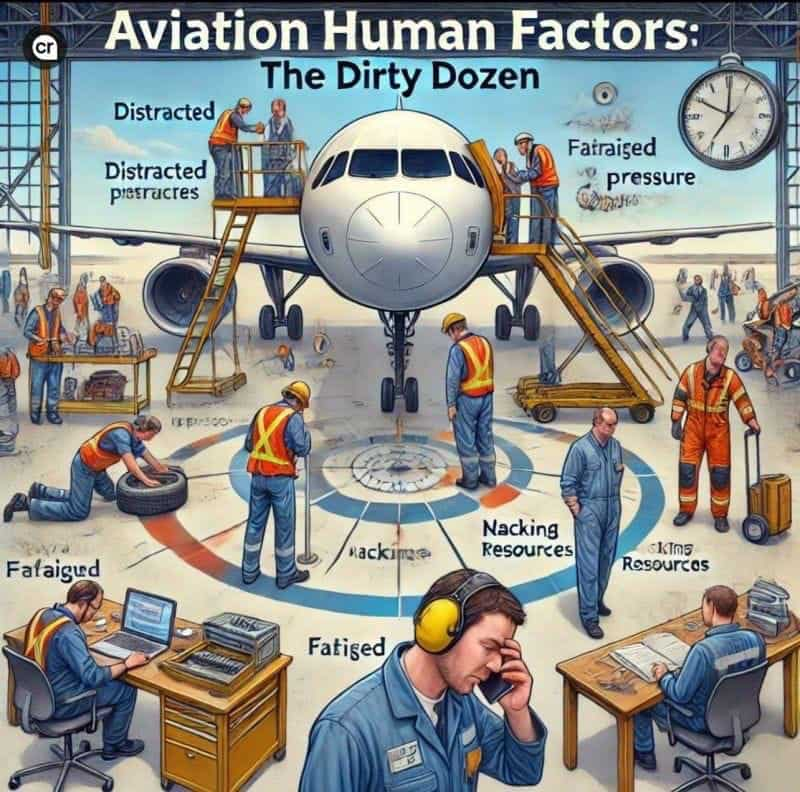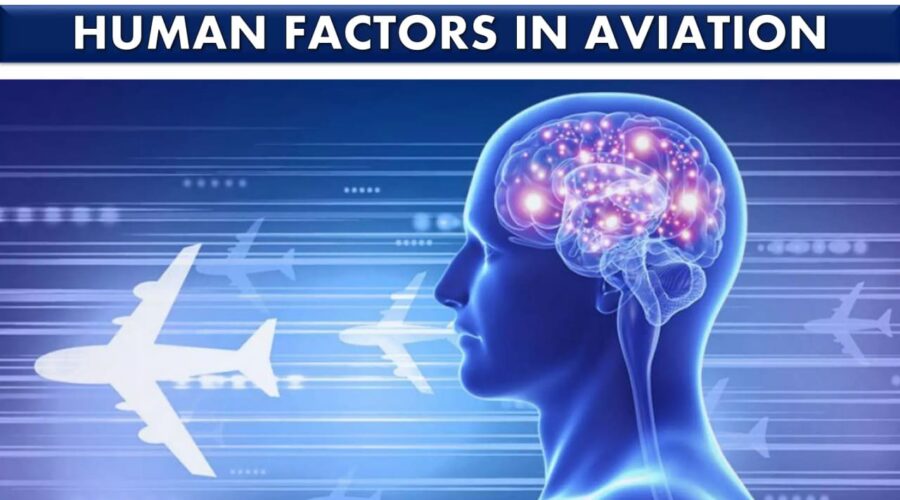Aviation Human Factors: The Dirty Dozen
Aviation Human Factors: The Dirty Dozen
InAviation, understanding human factors is critical to preventing mistakes. The Dirty Dozen represents 12 common causes of human error in aviation safety. Here’s how we can address each one:
- Lack of Communication👇
Incomplete or unclear messages can lead to confusion. Ensure every detail is conveyed and understood. - Complacency👇
Overconfidence or assuming nothing can go wrong is dangerous. Stay vigilant, even with familiar tasks. - Lack of Knowledge 👇
Gaps in knowledge can cause poor decisions. Regular training and keeping skills sharp are essential. - Distraction 👇
Getting sidetracked during a task. Refocus before continuing to ensure nothing is missed. - Lack of Teamwork 👇
Working in silos leads to missed details. Engage with your team to combine expertise and spot errors. - Fatigue 👇
Exhaustion reduces efficiency and sharpness. Manage rest, work hours, and energy levels wisely. - Lack of Resources 👇
Not having the right tools or materials forces shortcuts. Ensure resources are accessible and adequate. - Pressure 👇
Feeling rushed to meet deadlines compromises safety. Always prioritize doing things right over fast. - Lack of Assertiveness 👇
Hesitation to speak up can let issues slide. Stand firm and raise concerns when you see potential problems. - Stress 👇
High stress impacts concentration and decision-making. Learn to manage stress to keep calm under pressure. - Lack of Awareness 👇
Missing the bigger picture or situational details can be costly. Stay alert to all developments around you. - Norms 👇
Following “the usual way” without question can perpetuate unsafe habits. Regularly review and improve processes.
The Bottom Line:
Human factors like these can either support or sabotage aviation safety. By addressing the Dirty Dozen, we ensure a culture of awareness and safety excellence.




